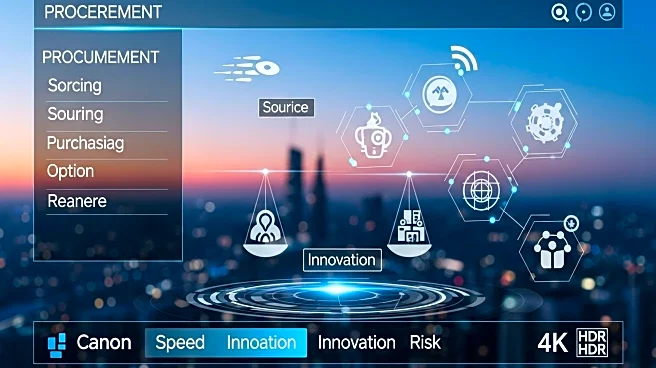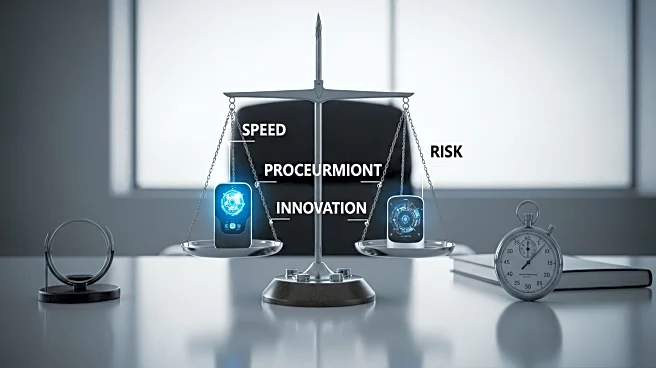What's Happening?
In a recent discussion, Teri Takai, chief programs officer for the Center for Digital Government, and Todd Gustafson, head of U.S. public sector for HP, explored the evolving role of government procurement officers in the face of rapid technological advancements. The conversation highlighted the shift in responsibilities from federal to state and local levels, emphasizing the need for procurement strategies that optimize IT investments and stretch limited budgets. The discussion also touched on the importance of relationships and trust in procurement, the rise of the federal government's OneGov model, and the integration of AI tools like ChatGPT and Microsoft Copilot to enhance procurement processes.
Why It's Important?
The transformation in government procurement is crucial as it directly impacts how public sector agencies manage their resources and respond to technological changes. By adopting value-driven contracting and leveraging AI tools, procurement officers can improve efficiency, reduce costs, and enhance cybersecurity responsiveness. This shift is significant for state and local governments as they navigate budget constraints and seek innovative solutions to meet public needs. The emphasis on relationships and trust in procurement can lead to more strategic partnerships and better service delivery.
What's Next?
As government procurement continues to evolve, agencies may increasingly adopt hybrid approaches and on-premises solutions to manage cloud expenses and safeguard privacy. The federal government's OneGov model could serve as a guide for state and local procurement reforms, promoting cost savings and agility. The integration of AI tools in procurement processes is likely to expand, providing deeper insights and driving smarter policy and purchasing decisions.
Beyond the Headlines
The ethical implications of AI in procurement processes are worth considering, as these technologies can uncover efficiencies but also raise concerns about privacy and data security. The shift towards value-driven decisions may lead to long-term changes in how government agencies prioritize their spending and engage with vendors.











